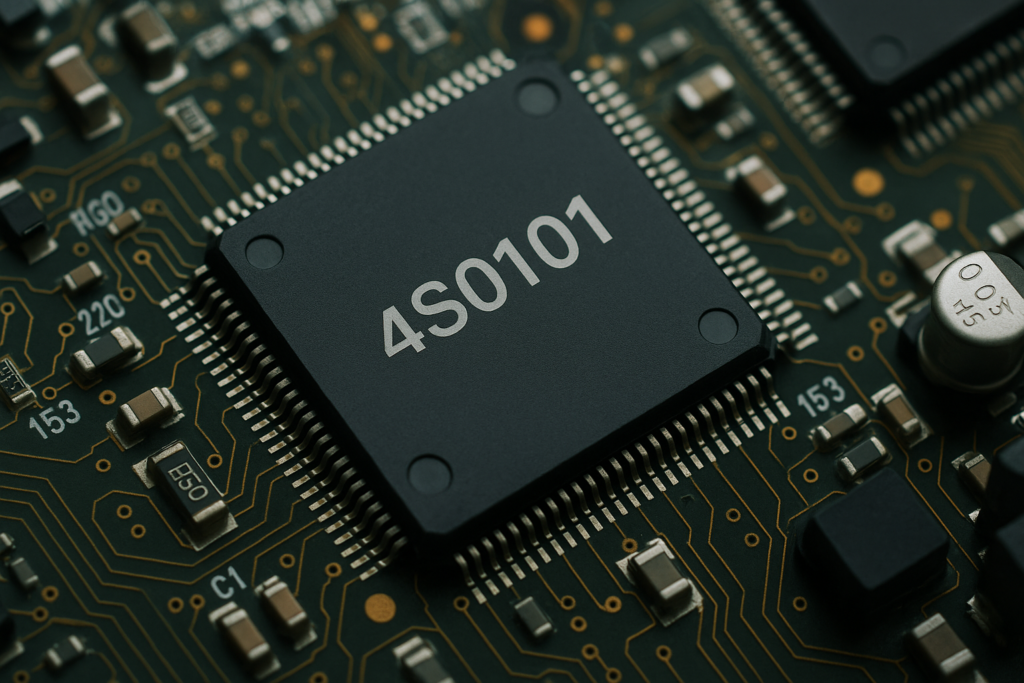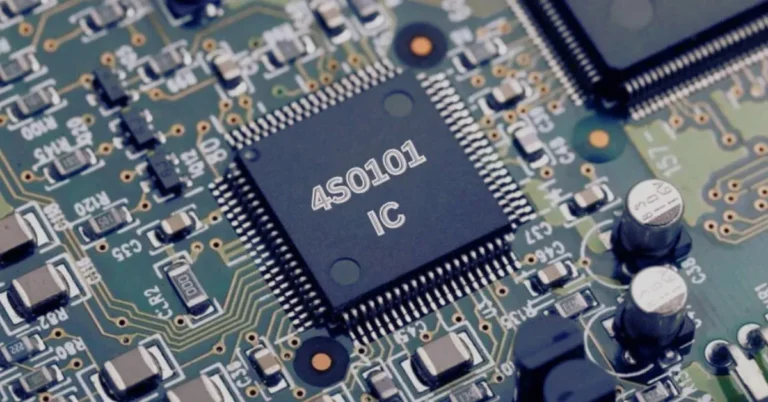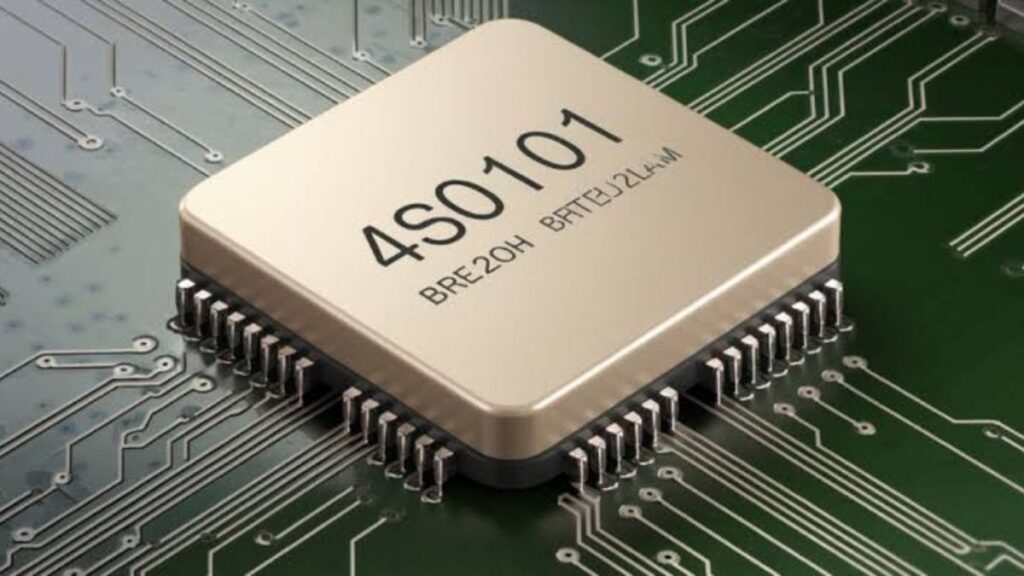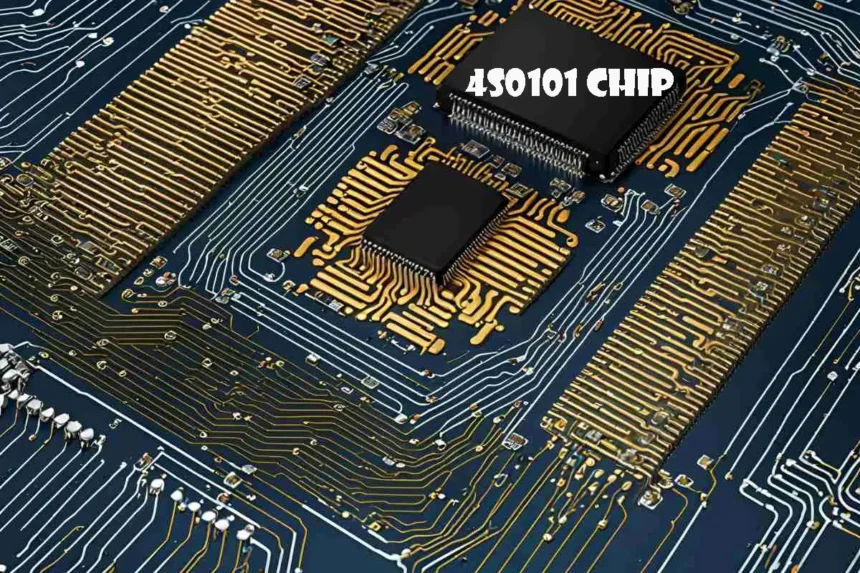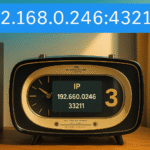The 4S0101 chip is a small, intelligent electronic component that lives quietly inside the battery pack of many Apple devices, especially iPhones. You won’t find it mentioned on the box, and you can’t see it from the outside—but it plays a crucial role in keeping your phone’s battery safe, smart, and efficient.
Over the years, as smartphones have become more powerful and compact, battery technology has also become smarter. Instead of just supplying power, today’s batteries can talk to your phone, monitor their own health, and even shut down to protect themselves in extreme conditions. The 4S0101 chip is the heart of this smart system in Apple batteries.
What Does the 4S0101 Chip Do?
The chip performs many behind-the-scenes jobs. Think of it as a battery manager, security guard, and messenger, all in one tiny device.
Battery Monitoring
The chip constantly checks:
- Voltage levels
- Temperature
- Charging and discharging speed
If anything goes outside safe limits, it reacts immediately to prevent damage.
Battery Protection
Overcharging, overheating, and deep discharging can damage lithium-ion batteries. The 4S0101 chip prevents that by cutting off power flow when needed.
Battery Health Reporting
When your iPhone shows messages like “Battery Health: 89%” or “Service Recommended,” that data is calculated by the chip inside your battery.
Authenticity Verification
The chip tells the iPhone whether the battery is a genuine Apple part or not. If it doesn’t recognize the chip, it may show a warning on your screen.
Where Is the 4S0101 Chip Located?
The 4S0101 chip is located inside the battery—not on the main motherboard. It’s soldered onto the battery’s internal circuit board and sealed in protective material. This means it’s not meant to be accessed or removed by users. Only trained technicians with advanced tools can work with it directly.
That’s also why when you replace a battery, the chip doesn’t move with the phone. If the new battery doesn’t have the original chip, your iPhone might not fully trust it—even if the battery works perfectly.
Technical Features of the 4S0101 Chip
This chip is part of a Battery Management System (BMS). Here are some of its key features:
- Smart charging control: Ensures that the battery charges only at safe rates.
- Temperature sensors: Protects the battery if it gets too hot or cold.
- Cycle tracking: Keeps count of how many times the battery has been charged.
- Digital communication: Talks to the iPhone using secure signals to update battery status.
It’s not just a sensor—it’s a microcontroller with firmware, meaning it can run programs and store data, just like a mini-computer.
Why Is It Important for Repairs?
Here’s where things get interesting. If you try to replace your iPhone’s battery at a shop that doesn’t use original Apple parts, or if the repairer doesn’t transfer the original chip, your phone will likely show a message like:
“Unable to verify this iPhone has a genuine Apple battery.”
This happens because the chip inside the new battery is either:
- Missing,
- Not the original one paired with your iPhone, or
- Not responding correctly to Apple’s system.
Because of this, many skilled technicians transfer the original 4S0101 chip from your old battery to the new one—a delicate process that requires special tools. If done right, your iPhone won’t even notice that the battery has been replaced.
Battery Authentication: Smart or Controversial?
One major role of the 4S0101 chip is to authenticate the battery. It tells your iPhone that the battery is genuine and approved. If it doesn’t recognize the chip or if the chip’s data doesn’t match the phone’s expectations, iOS disables some features like:
- Battery health monitoring
- Peak performance alerts
- Fast charging
- Detailed diagnostics
Apple says this is to protect users from low-quality, dangerous batteries. But many repair advocates say it’s a way to lock out third-party parts, making repairs more difficult and expensive.
This has sparked global debates about “right to repair,” where consumers demand the ability to fix their own devices without being limited by software or hardware locks.
How Do Technicians Handle It?
Professional technicians know that replacing an iPhone battery isn’t just about unplugging the old one and snapping in a new one. If they don’t handle the 4S0101 chip correctly, the phone may:
- Show annoying warning messages
- Disable certain features
- Confuse users about the new battery’s health
To avoid that, many techs use:
- Chip programmers to read and write chip data
- Micro-soldering stations to move the chip to a new battery
- Bypass tools that trick the phone into accepting third-party parts
Only experienced repair professionals should attempt this. A mistake could permanently damage the battery or the phone’s charging system.
Similar Battery Chips in Apple Devices
The 4S0101 isn’t the only chip Apple uses. In fact, Apple has used several versions depending on the device model and year:
- 3S0201 – Found in older iPhones and some iPads
- 4S0202 – Found in newer models like iPhone 11
- SWD or PBI chips – Used in some MacBook batteries
Each chip has a similar job: to manage, protect, and communicate on behalf of the battery.
Security and Firmware Features
The 4S0101 chip also has security layers to prevent tampering. It may use encryption or firmware locks to block fake chips or unauthorized modifications. If someone tries to reprogram it, the chip may simply stop responding or shut down key functions.
Apple includes these protections to ensure only safe, verified parts are used in their devices. However, this also means more control over repair access, which not everyone agrees with.
Final Thoughts
The 4S0101 chip is a vital part of Apple’s smart battery system, working silently inside iPhone batteries to manage safety, performance, and health data. It ensures that the battery charges properly, remains at a safe temperature, and communicates real-time status to the iOS system.
Although it’s not visible to users, the chip plays a major role in the phone’s functionality. From displaying accurate battery health to preventing risky operations, its contribution is critical for smooth device usage.
For repair technicians and tech-savvy users, understanding the chip’s role is key—especially during battery replacements. Mishandling or skipping the chip can lead to warnings or reduced performance in newer iPhones.
Overall, the 4S0101 chip is a small yet powerful component that supports Apple’s mission for safety, efficiency, and control in modern mobile devices.
Also Read:
janell kochevar with element 3: Where Marketing Meets Mission-Driven Communication
Tiwzozmix458 for Businesses: Streamlining E-commerce and Data Flowv
That-bites.org foodies: A Delicious Destination for Culinary Enthusiasts
Greece Katz Martian: Culture, Art, and Unexplained Visions
Quotela.net: A Modern Destination for Daily Inspiration, Quotes, and Lifestyle Trends
#mobilecreativeorg: The Rise of Mobile-First Creativity Worldwide
